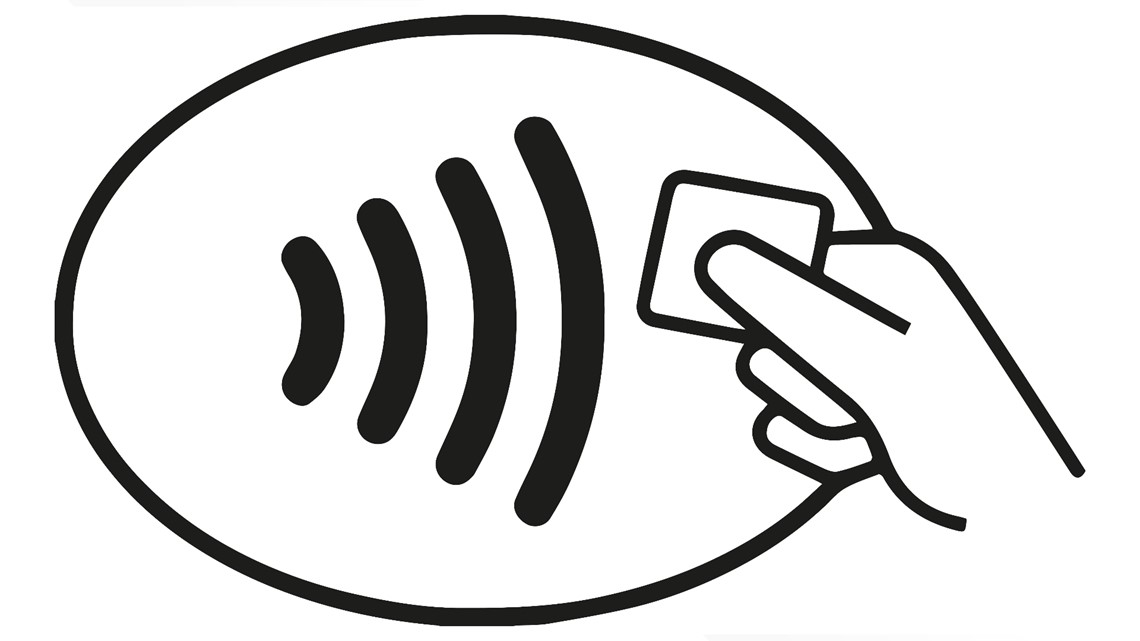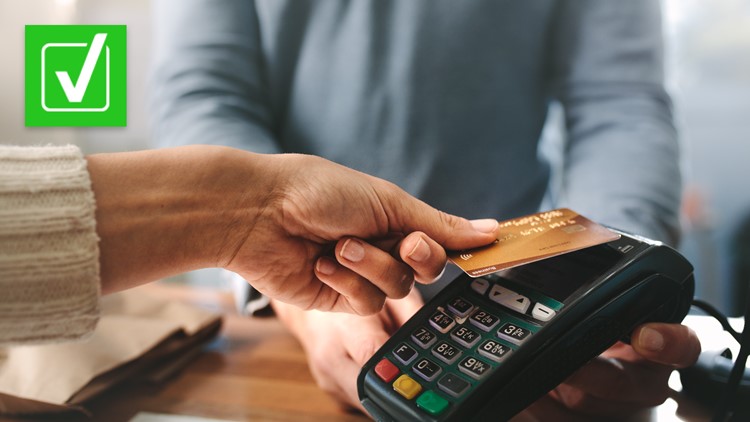Throughout the early stages of the coronavirus pandemic, many people looked for ways to touch fewer surfaces while out in public to prevent the spread of the COVID-19. In fact, more than 51% of Americans said they used some form of contactless payment in 2020, including tap-to-pay credit cards, according to a Mastercard study. VERIFY viewer Raymond wants to know if tapping his card at the register is just as secure as inserting a chip card.
THE QUESTION
Is contactless card payment as secure as inserting a chip card at the register?
THE SOURCES
- American Express
- Capital One
- Mastercard
- Visa
- Frank Abagnale, author, lecturer and security consultant
- Adam K. Levin, consumer affairs advocate and former director of the New Jersey Division of Consumer Affairs
THE ANSWER
Yes, contactless card payment is as secure as inserting a chip card at the register.
WHAT WE FOUND
A chip card is a credit or debit card embedded with a microchip that encrypts information, making it extremely difficult for the card to be copied or counterfeited, according to Mastercard. These types of cards can process contactless payments when tapped at certain registers, Visa said.
Contactless chip cards use radio-frequency identification (RFID) technology that allows the card to communicate with the card reader when they are held nearby during a transaction. When the card is tapped against the card reader, Mastercard says the information is transmitted in a highly secure manner within a fraction of a second.
American Express, Mastercard, Visa and banking company Capital One all say contactless card payment is just as secure as inserting a chip card at the register. Capital One explains that during each contactless transaction, a unique, one-time code or password is created that helps reduce security risks since the code can’t be used again and it can be read only by the card-processing network.
“Tap-to-pay is equally as secure as inserting a chip card because both payment methods send a unique one-time code to the terminal to protect a customer’s personal information,” said Elizabeth Karl, the vice president and global head of payments consulting at American Express.
Accidental charges are less likely due to the fact that contactless cards must be placed within an inch or two from the symbol at the register in order for the transaction to go through. The contactless symbol looks similar to the WiFi symbol.


Adam K. Levin, a former director of the New Jersey Division of Consumer Affairs, told VERIFY contactless cards and chip cards offer similar security during the checkout process. Levin says the biggest difference between the two payment options is that most contactless cards don’t require a PIN, but both options are significantly more secure than swiping your card’s magnetic strip.
Frank Abagnale, an author and lecturer who has worked with, advised and consulted hundreds of financial institutions, corporations and government agencies around the world, agrees.
“In both cases, contactless and chip cards, the technology that is used to validate these cards is much superior to magstripes,” Abagnale said in an email statement.
Abagnale and Levin both warn that all credit cards can be abused if they are stolen or fall into the wrong hands. If you've lost your card or you suspect unauthorized activity on your account, you should immediately contact the financial institution that issued your card.



